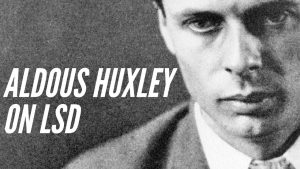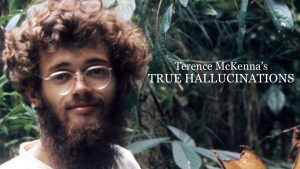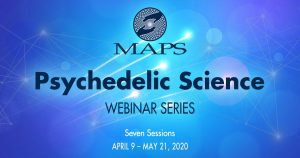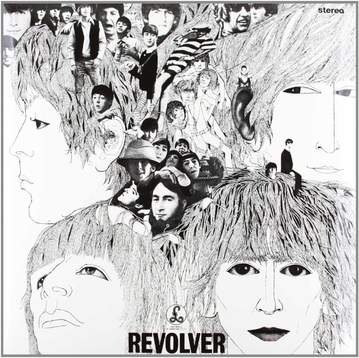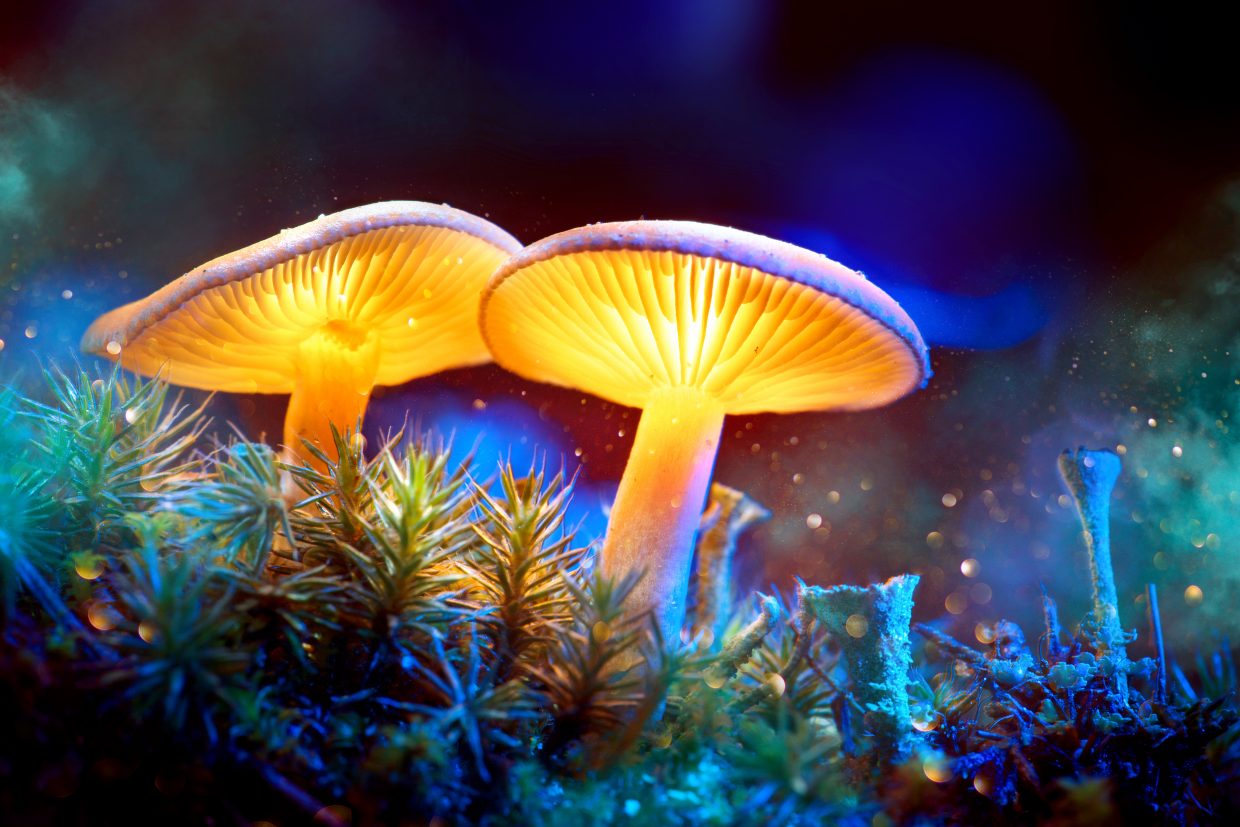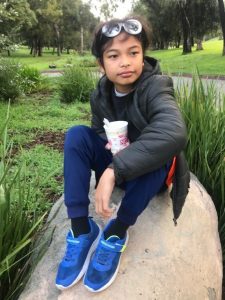 What have you been doing with yourself during our now, more than month-long, prescribed shelter-at-home pandemic? There’s so much opportunity for those of us who aren’t wrestling with antagonists like sickness, joblessness, inability to pay rent or bills, buy food, take care of our family, friends, neighbors, or loved ones, become home schoolers, and/or not get on each others’ nerves. Of course, there’s universal fear, but fortunately, although my wife has been laid off from restaurant work, she is collecting unemployment insurance, and although my son has just sadly celebrated his 13th birthday alone with just his Mom and Dad, and will continue doing distance learning at LAUSD through at least the summer, he is a happy kid, and has taken to walking the dog by himself in Elysian Park, which is still open, at least to us locals.
What have you been doing with yourself during our now, more than month-long, prescribed shelter-at-home pandemic? There’s so much opportunity for those of us who aren’t wrestling with antagonists like sickness, joblessness, inability to pay rent or bills, buy food, take care of our family, friends, neighbors, or loved ones, become home schoolers, and/or not get on each others’ nerves. Of course, there’s universal fear, but fortunately, although my wife has been laid off from restaurant work, she is collecting unemployment insurance, and although my son has just sadly celebrated his 13th birthday alone with just his Mom and Dad, and will continue doing distance learning at LAUSD through at least the summer, he is a happy kid, and has taken to walking the dog by himself in Elysian Park, which is still open, at least to us locals.
And me? I’ve chosen to use the time to immerse myself, to home school myself, in the online study of – psychedelics.
That’s right. Of course, as a Baby Boomer, I necessarily dabbled in the recreational exploration of LSD, magic mushrooms, mescaline, peyote, and whatever else came across the counter-cultural transom in the mind-expanding 60s and 70s, but it’s been decades since I’ve had the time or interest in taking anything other than edible cannabis. Because yes, I did switch to edible chocolate cannabis a couple of decades ago, after I had cancer of the lymphatic system in 1989, because I found that my lungs weren’t nearly as resilient to inhaled smoke as they were back in the day. (I tried inhalers, but I was much happier with the magical effects of edible chocolate until recently when I was diagnosed with diabetes type 2, and I decided to eliminate sugar altogether.)
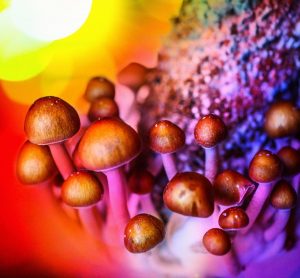 And so it was the simultaneous synchronicity of my getting on in years and the coincidence of my walking into Vroman’s Bookstore in Pasadena, just shortly before the appearance of the Covid-19 virus this winter, that created this life-changing alchemy. My wife and I had received the lovely Christmas gift of two massages at A Beautiful Day Spa on Colorado Boulevard just doors away from Vroman’s, one of my favorites in the LA area. And so after feeling kneaded, cleansed, and relaxed, we wandered into Vroman’s in the middle of the afternoon to – just browse. And while my wife wandered over to the religious, Christian and Muslim studies area, I just wandered… until I saw a book on display called… How to Change Your Mind by Michael Pollan.
And so it was the simultaneous synchronicity of my getting on in years and the coincidence of my walking into Vroman’s Bookstore in Pasadena, just shortly before the appearance of the Covid-19 virus this winter, that created this life-changing alchemy. My wife and I had received the lovely Christmas gift of two massages at A Beautiful Day Spa on Colorado Boulevard just doors away from Vroman’s, one of my favorites in the LA area. And so after feeling kneaded, cleansed, and relaxed, we wandered into Vroman’s in the middle of the afternoon to – just browse. And while my wife wandered over to the religious, Christian and Muslim studies area, I just wandered… until I saw a book on display called… How to Change Your Mind by Michael Pollan.
I’d heard of Pollan. Something about food and healthy living, but I’d never read him. My diabetes diagnosis perhaps had me more interested than ever before in changing my diet. I was off sugar for the first time in my life, along with completely cutting down on my carbs and reading food labels like a fanatic. A best seller on ingestion? Why not? I picked up the book. But I was completely surprised when I read the sub-title: “What the New Science of Psychedelics Teaches Us About Consciousness, Dying, Addiction, Depression, and Transcendence”
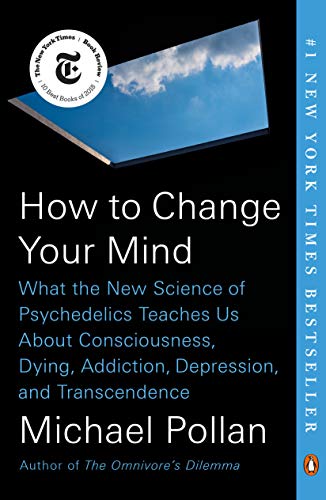
I opened up the Prologue (edited below):
Midway through the 20th century, two unusual new molecules, organic compounds with a striking family resemblance, exploded upon the West. In time, they would change the course of social, political, and cultural history. The first of these molecules was an accidental invention of science. Lysergic acid diethylamide, commonly known as LSD, was first synthesized by Albert Hoffman in 1938. It wasn’t until 5 years later when Hoffman, who worked for the Swiss pharmaceutical company, Sandoz, accidentally ingested a miniscule quantity of the new chemical that he realized that he had created something at once powerful and terrifying.
The second molecule had been around for thousands of years, though no one in the developed world was aware of it. Produced not by a chemist, but by an inconspicuous little brown mushroom, this molecule, which would become known as psilocybin, had been used by the indigenous people of Mexico and Central America for hundreds of years as a sacrament. Called teonanactactl by the Aztecs, or “flesh of the gods”… in 1955 a Manhattan banker and amateur mycologist, R. Gordon Wasson, sampled the “magic mushroom”… in the southern state of Oaxaca, Mexico, and two years later published a 15 page account in Life Magazine.
The history of the West had shifted.
I was hooked. I didn’t buy the book right there in Vroman’s. I went home and bought the book on Audible. Read by Pollan himself. That’s the way I “read” these days. I highly recommend it.
After taking about a month to ingest, digest, and process the contents of the book, it led me to several more months of consumption. The Pollan book was a great starting point. Written by a skeptic himself, Pollan is a natural researcher and interviewer, who was far from a 60s counter cultural, rock ‘n roller or drug user back in the 60s and 70s. He takes the reader though an excellent scientific refresher course on the exciting research of the late 40s and 50s. In fact, for most of the 1950 and early 1960s, many in the psychiatric establishment regarded LSD as a miracle drug. Psychiatrist Oscar Janiger introduced celebrities like Cary Grant and writer Aldous Huxley (“Doors of Perception”) to LSD in the 1950s. Another interesting character in the 50s, named Al Hubbard, an ardent Catholic with a CIA background, introduced thousands of Americans to LSD, using a “top down” strategy, beginning with brilliant Silicon Valley techies, brainy government scientists, and church big wigs, ending up with the CIA high jacking the drug for their own nefarious “mind control” purposes, ultimately to no avail.
By the time Harvard lured Timothy Leary to the Harvard Psilocybin Project in 1959, along with hiring his associate Richard Alpert (who changed him name to “Ram Dass and wrote the era-defining book, Be Here Now), and fired them both in the mid-1960s for reversing the “top- down” Hubbard model by attempting to make LSD the drug of choice for “Everyman” (and every woman) in America, thereby launching the sex, drugs, and flower power revolution of the 1960s, the “science” of psychedelic research was over, shut down by paranoid and fearful mainstream America. Because although neither LSD, magic mushrooms, or any “psychedelic” drugs are “addictive”, and over-doses are nearly impossible, they can still bring on psychosis, so people with a history of mental disease should be screened to avoid them. Many “bad trips” and emergency room visits turn out to be short-lived panic attacks, but people can still do stupid things on the drugs and challenging trips are also real. Yet in clinical settings since the 1990s, the way psychedelics have since been “scientifically” and “clinically” administered, nearly 1,000 volunteers have been dosed, and not a single serious adverse event has been reported. Nevertheless, many scientists and researchers do blame Leary’s high profile, public antics for nearly completely shutting down all scientific and clinical psychedelic research from about 1968-1994.
Before I move on, here is 45 minute YouTube video with Michael Pollan: https://www.youtube.com/watch?v=KuhmZSFvhL0
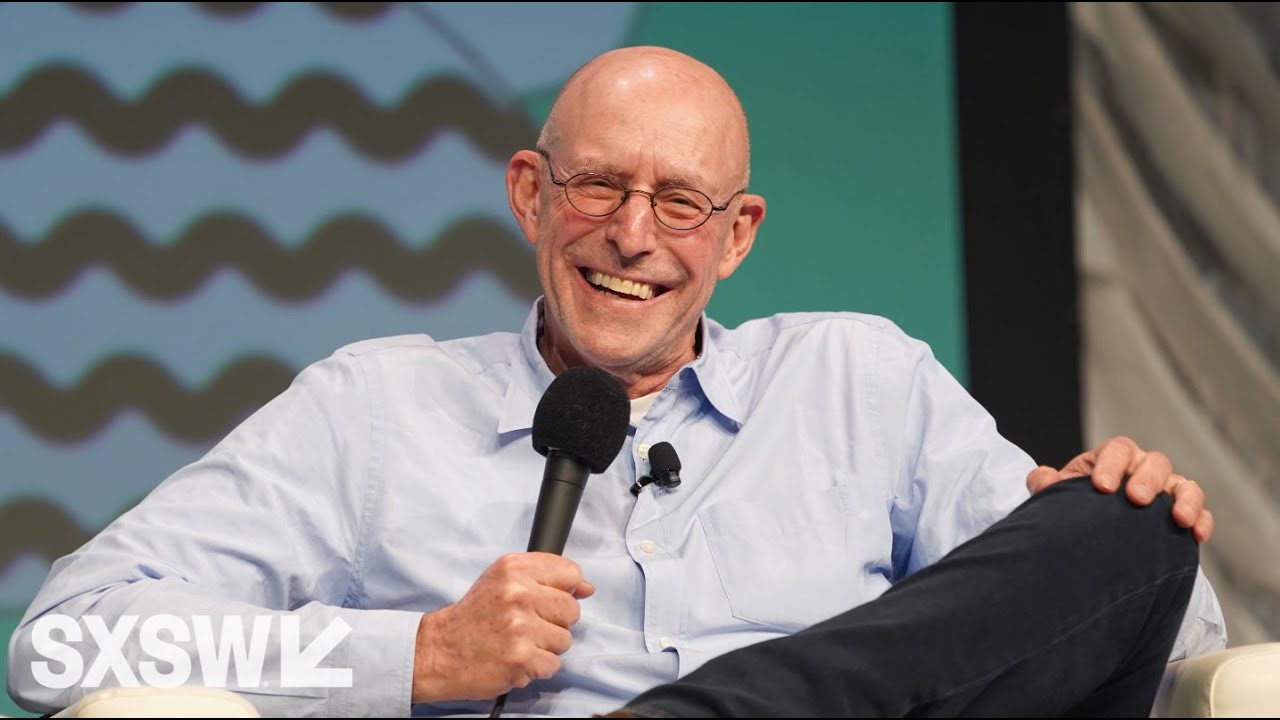
And here is a brief historical back story: Archaeologists have provided fossil evidence that show humans have used psychoactive plants for 10,000 years during ritual ceremonies. Psychoactive plants were important in the development of human society, and there is historical evidence of cultural use over the past 5,000 years. The human urge to intoxicate is so strong that it is the fourth most primal instinct after hunger, thirst and sex. People all over the world have anthropologically always used psychoactive substances, and the desire to take mind-altering drugs is inherently programmed into our biology.
It is likely that psychedelics have been used in ancient cultures as intoxicants and in magical rites for millennia. We cannot say for how long psilocybin-containing mushrooms have been used because Roman Catholic missionaries destroyed records in Mexico and in Central and South America. However, it has been shown that Native Americans collected mescaline-containing peyote buttons that were carbon dated to 3780-3660 BC, and before that, indigenous cultures made rock paintings of mushrooms around 7000 BC.
It has been suggested that the Greek Eleusian cultish ceremonies dedicated to Demeter and Persephone (1600-392 BCE) may well have involved a well-guarded, secret and still-to-this-day, unknown psychedelic elixir. There is more evidence of ceremonial peyote use in the Americas from 1000 BC, and Catholic texts mention peyote use from pre-Colombian times throughout the 16th century AD. Despite the development of Christianity which painted the use of psychedelics as heretical, they were nevertheless rediscovered by Western science in the last part of the second millennium. And as chemists manipulated molecules to create new synthetic compounds (eg. MDMA, LSD, ketamine) related to natural plant-based psychedelics (psilocybin, ayahuasca), botanists, anthropologists, writers, and artists experimented with both kinds of psychedelics to explore mind-enhancing realms of consciousness. Writing about the experience, already by 1959, Huxley wrote “This is how one ought to see, how things really are.”
Next, my reading, research, and YouTube watching led me, naturally to – Terence McKenna. Because to most of us who have even dabbled in, or been even casually interested in psychedelics, this Western-born, far-traveled anthropologic ethnobotanist-philosophical shaman, has been a well-known and legendary titan in the field for decades. Called the “Timothy Leary of the 90s,” McKenna, born in 1946, had already devoured Huxley and Jung by the time he took off to Asia as a student of art history in the late 1960s, where he soon found himself a hashish smuggler in Tibet and a professional butterfly collector in Indonesia, while studying Tibetan botany and hallucinogenic shamanism. He then embarked to the Colombian Amazon jungle in the early 1970s with his brother Dennis to study psychedelic mushrooms that contained DMT which he later reported were the strongest psychedelic molecules and hallucinogens he knew of, so strong that they could cause “death by amazement”!
McKenna is also well known for documenting and introducing South American traditional ayahuasca “ceremonies” to the West. As an ethnobotanist, he was astoundingly well versed in the various species of plants that grew in the Amazon as well in which specific tribes used which specific plants for which specific purposes. He gave a great deal of credence to the communal function of the local shaman, the medicinal and spiritual leader of the ceremony, sometimes showing how it was the shaman himself, who took the medicine for the good of the tribal members, not the other way around – so as to be “instructed” by the plant medicine in its ways to heal members of the community. In revolt against the modern Western world, with its plethora of illnesses of the body and soul, its neuroses of the mind, its disconnection to spirit and to nature, McKenna led a revival of the re-connection to the natural world that resonates today and is on the forefront of ecology, healthy living, and giving more human respect to planet earth. Many of his theories are pretty far out, some about alien visitation, others about how the prehistoric consumption of psilocybin mushrooms on the African veldt single-handedly advanced the speed of human evolution, but his brilliant mind, is always entertaining, and always worth a good listen.
McKenna became astoundingly popular on the international lecture circuit in the 1990s at places like the Esalen Institute in Big Sur, California, and at “new age” think tanks all around the world, and even though he died prematurely from brain cancer at age 53 in 2000, he is as popular as ever on YouTube with viewers of all ages during our current-day psychedelic “renaissance”.
Here is a vintage Mckenna YouTube video to start with: “Sacred Plants as Guides”: https://www.youtube.com/watch?v=OKZTV5bXw9w
Basically, what personally interests me about the psychedelic “experience” is the potential of the psychedelic drug’s ability “to dissolve the ego,” “to destroy the barriers of the self, “to break down the resistances of the ordinary rational mind.” To allow it to merge into the “numinous” (something greater than itself)). To become part of the “whole”, the “universal”, the “supernatural”, perhaps even the “mystical.” Religious people may call this “God”, non-religious people, “transcendence”. This last word has always struck me as the very purpose and goal of human consciousness.
In 1901, American philosopher, William James “marked” 4 things typical of a mystical experience:
- Ineffability- No adequate report of its contents can be given in words; its quality must be directly experienced
- Noetic quality – Although to similar to states of feeling, mystical states seem to those who experience them to be also states of knowledge. They are illuminations, revelations, full of significance and importance, all inarticulate though they remain, and as a rule they carry, with them a curious sense of authority for after-time.
- Transiency —Mystical states cannot be sustained for long.
- Passivity —The mystic feels as if his own will were in abeyance, and indeed sometimes as if he were grasped and held by a superior power.
All these ego-dissolving and mystical states have been reported with psychedelic experiments and experiences, from reports of housewives taking LSD in clinical trials in the 1950s, to current clinical trials with all kinds of psychedelic-assisted therapies with depression, anxiety, PTSD, obsessive-compulsive disorder, advanced-stage cancer diagnosis, and alcoholism (Bill W, the founder of Alcoholics Anonymous, even tried LSD in the 1950s (around the time of his founding AA), and some say that his original “higher power” in the 1930s was non other than the hallucinogenic plant medicine, belladonna. Heresy, of course, say AA members!)
There is much more psychedelic research and history to investigate. People. Organizations. Experiments. Drugs. Here are just a few more links and pathways:
MAPS (Multidisciplinary Association for Psychedelic Studies) is a non-profit membership organization, now based in Santa Cruz, California, founded in 1986 by Rick Doblin, working to raise awareness and understanding of psychedelic substances,.
MAPS helps scientists design, fund, and obtain regulatory approval for studies of the safety and effectiveness of a number of controlled substances, working closely with government regulatory authorities worldwide such as the US Food and Drug Administration (FDA) and the European Medicines Agency (EMA) to ensure that all of its sponsored research protocols conform to ethical and procedural guidelines for clinical drug research.
Included in MAPS’ research efforts are MDMA (the manufactured molecule in Ecstasy) for the treatment of PTSD; LSD and psilocybin for the treatment of anxiety, cluster headaches, and depression associated with end-of-life issues; ibogaine for the treatment of opiate addiction, ayahuasca for the treatment of drug addiction and PTSD; medical marijuana for PTSD; and alternative delivery systems for medical marijuana such as vaporizers and water pipes. MAPS officials say the organization’s ultimate goal is to establish a network of clinics where these and other treatments can be provided together with other therapies under the guidance of trained, licensed physicians and therapists.
In addition to sponsoring scientific research, MAPS organizes continuing medical education conferences, sponsors and presents lectures and seminars on the state of psychedelic and medical marijuana research, provides psychedelic harm reduction services through the Zendo Project at events such as music festivals and Burning Man, and publishes a triannual magazine-style publication, the MAPS Bulletin, with updates about its ongoing research efforts, legal struggles, and educational initiatives. MAPS also publishes books dealing with the science, history, and culture of psychedelic research and psychedelic therapies. I am currently signed up for a weekly series of lectures at 12 noon on Thursdays PST: https://maps.org/webinars2020?
————-
The Marsh Chapel Experiment or “The Good Friday Experiment”
 Richard Alpert and Timothy Leary at the time of the Good Friday Experiment , 1962
Richard Alpert and Timothy Leary at the time of the Good Friday Experiment , 1962
…was a experiment conducted on Good Friday in 1962 at Boston University’s Marsh Chapel.
Walter N. Pahnke, a graduate student in theology at Harvard Divinity School, designed the experiment under the supervision of Timothy Leary, Richard Alpert, and the Harvard Psilocybin Project. Pahnke’s experiment investigated whether psilocybin (the active “entheogen” in psilocybin mushrooms) would act as a reliable psychedelic in religiously predisposed subjects.
Prior to the Good Friday service, twenty graduate degree divinity student volunteers from the Boston area were randomly divided into two groups. In a double-blind experiment, half of the students received psilocybin, while a control group received a large dose of niacin. Niacin produces clear physiological changes and thus was used as an active placebo. In at least some cases, those who received the niacin initially believed they had received the psychoactive drug. However, the feeling of face flushing (turning red, feeling hot and tingly) produced by niacin subsided about an hour after receiving the dose. However, the effects of the psilocybin intensified over the first few hours.
Almost all of the members of the psilocybin-dosed group reported experiencing profound religious experiences, providing empirical support for the notion that psychedelic drugs can facilitate religious experiences. One of the participants in the experiment was religious scholar Huston Smith, who would become an author of several textbooks on comparative religion. He later described Good Friday his experience as “the most powerful cosmic homecoming I have ever experienced”. And in a 25-year follow-up to the experiment, all of the subjects given psilocybin, except for one, described their experience as having elements of “a genuine mystical nature and characterized it as one of the high points of their spiritual life”.
Many decades later, MAPS researcher Rick Doblin considered Pahnke’s original study partially flawed due to incorrect implementation of the double-blind procedure, and several imprecise questions in the mystical experience questionnaire. However, in 2002 (published in 2006), a more rigorously controlled version of this experiment was conducted at Johns Hopkins University by Roland R. Griffiths, yielded similar results, finding that over half of the participants rated the experience among the top five most meaningful spiritual experiences in their lives, and considered the experience to have increased their personal well-being and life satisfaction… https://www.youtube.com/watch?v=uxWvIp9XtUc
….which leads us to another of the premier American centers for psychedelic research:
https://hopkinspsychedelic.org in Baltimore Maryland,
Founded by the above-mentioned Roland R. Griffiths, in 2000.
From their website: “Scientists today are entering a new era of studying a truly unique class of pharmacological compounds known as psychedelics. Although research with these compounds was first started in the 1950s and ‘60s, it abruptly ended in the early 1970s in response to unfavorable media coverage, resulting in misperceptions of risk and highly restrictive regulations.
“After a decades-long hiatus, in 2000 our research group at Johns Hopkins was the first to obtain regulatory approval in the United States to reinitiate research with psychedelics in healthy volunteers. Our 2006 publication on the safety and enduring positive effects of a single dose of psilocybin is widely considered the landmark study that sparked a renewal of psychedelic research world-wide.
“Since that time, we have published further groundbreaking studies in more than 60 peer-reviewed articles in respected scientific journals. This makes Johns Hopkins the leading psychedelic research institution in the U.S., and among the few leading groups worldwide. Our research has demonstrated therapeutic effects in people who suffer a range of challenging conditions including addiction (smoking, alcohol, other drugs of abuse), existential distress caused by life-threatening disease, and treatment-resistant depression. Studying healthy volunteers has also advanced our understanding of the enduring positive effects of psilocybin and provided unique insight into neurophysiological mechanisms of action, with implications for understanding consciousness and optimizing therapeutic and non-therapeutic enduring positive effects.
At the Center for Psychedelic and Consciousness Research, researchers will focus on how psychedelics affect behavior, mood, cognition, brain function, and biological markers of health. Upcoming studies will determine the effectiveness of psilocybin as a new therapy for opioid addiction, Alzheimer’s disease, post-traumatic stress disorder (PTSD), post-treatment Lyme disease syndrome (formerly known as chronic Lyme disease), anorexia nervosa and alcohol use in people with major depression. The researchers hope to create precision medicine treatments tailored to the specific needs of individual patients.”
Here is a YouTube interview with Bill Richards, legendary psychedelic “guide”, who worked many years at Johns Hopkins:
He is interviewed by Mike Margolies of Psychedelic Seminars, founded in 2015, a very interesting and engaging educational conversation series with scientists, authors, and activists, deepening awareness of the benefits, risks, and complexities of psychedelics.
And here’s another interesting headline: “Single Dose of Hallucinogenic Drug Psilocybin Relieves Anxiety & Depression in Patients with Advanced Cancer” published by lead investigator Stephen Ross, MD, director of substance abuse services in the Department of Psychiatry at NYU. It talks about the relief of anxiety and depression in patients with late stage and terminal cancer diagnoses – after just a single dose of psilicyboin.
What especially interests me about this article as I head towards the finish line (of life) – is the idea and possibility of heading towards this finish line – less worried, less anxious, and less depressed… about dying… which we all must do. And which too many of us (at least in the West) do fearfully. But… perhaps with some more research and perhaps with some careful and controlled psychedelic exploration, perhaps I, perhaps we, just might… be better prepared… for a less fearful “departure.” For a more, self-chosen, self-created, psychedelic “blastoff”… into the… unknown… death… which may no longer be viewed as “the end of life”, the culminating and terminal event of life, but tather… just a natural “part of it.” Like my wife’s Indonesian countrymen see it. Like traditional people in Mexico see it.
Sure, death will still involve a physical decay, just like it does in the rest of nature, because certainly there’s no doubt, no matter how positively I think about it, my physical body, just as your physical body, will, must, decline as we advance towards old age and death, whether it’s via cancer, or slow congestive heart failure, as my father went out, or whether it’s death by liver or lung, brain or bile, leg or lust, whichever way… still the psychological and emotional reduction of fear and anxiety around death — looks like a beautiful new psychedelic frontier to me. What about you?
I know I’m getting quite a bit long-winded here for an online magazine, but I hope it’s still interesting and that we still DO have a bit more self-imposed, shelter-at-home time on hand!
Just a few more interesting psychedelic people, ideas, and connections, I promise:
Stanislov Grof – a Czech psychiatrist, one of the founders of the field of transpersonal psychology and a researcher into the use of non-ordinary states of consciousness for purposes of exploring, healing, and obtaining growth and insights into the human psyche. Known in scientific circles for his early studies of LSD and its effects in the field of psychedelic therapy.
Rick Strassman, MD – author of “DMT: The Spirit Molecule” (May 2019), performed the first new human studies with psychedelic drugs in the US in over 20 years after the shut down of research in the late 1960s. His research involved the powerful compound, DMT, found naturally in many plants and animals (possibly in the human brain). He was led to this substance through his earlier study of the pineal gland as a potential biological locus for spiritual experiences.
Paul Stamets – “is a speaker, author, mycologist, medical researcher and entrepreneur, and is considered an intellectual and industry leader in fungi: habitat, medicinal use, and production. “Featured in Pollan’s book, “How to Change Your Life”, “he lectures extensively to deepen the understanding and respect for the organisms that literally exist under every footstep taken on this path of life. His presentations cover a range of mushroom species and research showing how mushrooms can help the health of people and planet. His central premise is that habitats have immune systems, just like people, and mushrooms are cellular bridges between the two.” The terrific documentary film, “Fantastic Fungi”, featuring Stamets, can be rented or purchased online: https://fantasticfungi.com/
Robin Cahart-Harris – Working out of Imperial College in London, just one of many researchers, scientists, scholars, and clinicians working internationally, Cahart-Harris, also interviewed in Pollan’s book, was especially interested in the simulation of the act of dying by the psychedelic experience of taking DMT, as originally discovered in traditional South American ayahuasca ceremonies. Previously working with double blind LSD and psilocybin (the chemical in magic mushrooms) experiments, Cahart-Harris confirmed that indeed a part of the conscious brain called the default mode network (DMN) became far less active on psychedelics, accounting for the “near death experience” that was consistent with the previously-reported “mystical experience” in other psychedelic studies.
Daniel McQueen and the Center for Medicinal Mindfulness (CMM) – “Established in 2012 in Boulder, Colorado, CMM became the first cannabis-assisted psychotherapy, psychedelic therapy, and conscious cannabis organization in the United States, and pioneered a new psychedelic therapy modality called cannabis-assisted psychedelic therapy. Medicinal Mindfulness integrates the four primary paradigms of psychedelic medicine use: the creative, scientific, psychological, and spiritual. These profound psychedelic healing and transformational experiences are offered in a safe, legal, and supportive environment, on a one-on-one or group basis to support the healing of trauma, PTSD, anxiety, depression, addiction, and other emotional struggles.” And shout outs to local Los Angeles practitioners Skye Weaver and psychedelic Yoga Galactica yogis, Kamala & Siri..
Ketamine Assisted Therapy – an FDA approved (although, expensive if purchased above market) synthetically-made, recently popular, and well-marketed type of anti-depression therapy, that differs markedly in effect depending on dosage – whether it is used in low-dosage, multiple-time a week, usually medically syringe applied, as opposed to slightly higher dosage given in-office in coordination with a therapist, or at a much stronger, ”psychedelic” dissociative dosage, usually taking several hours, definitely under the guidance of a therapist. For more on Ketamine, here is a good Psychedelic Seminar YouTube Interview with Dr. Raquel Bennett: https://www.youtube.com/watch?v=ycgQwPRNjiI&t=3081s
This brings up the important phrases “set” and “setting” that I have not yet discussed. These two words were first mentioned by Western researches as early as Leary and Alpert at the Harvard Psilocybin Project in the early 1960s. As the words literally mean, they are crucial in the taking and administering of strong psychedelic drugs for the “patient”, or drug “experiencer” to feel “safe”. To have a feeling of trust – to be given the correct dosage – if indeed his or her ego is going to dissolve, and if he or she may, in fact, have to face frightening, sometimes what may even appear to be “life-threatening” situations, even if they are entirely of psychological or “internal” in nature, that is, produced or created by the taking the drug itself. If the the drug user is not going to have a “bad trip”, or to be left completely to him or herself if the trip turns out to be a challenging or negative one, then the trained clinician, guide, or therapist, can provide the safe set and setting to potentially turn the negative experience into a positive one – not too much unlike following John Lennon’s early Revolver advice, “Turn off your mind, relax, and float down stream…”
That is exactly why modern-day clinicians have created “controlled” and safe office or lab environments, with hi-tech brain scanning and heart-monitoring devices, which often resemble living rooms with comfortable couches and familiar visual landscapes (even though patients are almost always given eye ware to cover their eyes during the psychedelic experience), along with creating carefully curated musical playlists. In addition, many clinicians and guides will have one or two meetings with a patient to prepare the patient for what to expect before the actual day of the drug’s administration, when typically, 2 clinicians, one male, another female, will attend to the patient for the entire multi-hours-long “journey.” A week or so later, there will always be at least one session afterwards called an “integration” session to see how the often extremely unusual psychedelic experience can be “integrated” into the patient’s everyday life.
As you can tell, the psychedelic “renaissance has become a big and thoughtful business.
How to become a participant in an upcoming clinical trial? Not easy, but take a look (March, 2020):
https://psychedelic.support/resources/how-to-join-psychedelic-clinical-trial/
——————————————
There are so many more names, organizations, and avenues to pursue down this psychedelic path.
Don’t forget to look into “micro-dosing” with LSD or psilocybin: https://www.youtube.com/watch?v=4fjV82MojVk
I assure you that I have only skated on the rim of the volcano. Please take a look at some of the links I have offered above and follow your own instincts and curiosity. You don’t have to become an immediate “pyschonaut” to become intrigued by the potential of the field.
I hope to have piqued your interest.
Be healthy and safe……………

